- Home
- Philip Pullman
Daemon Voices Page 18
Daemon Voices Read online
Page 18
And just looking at this tale and its surroundings we can see the depth of scholarship that Briggs brought to her massive work. The notes tell us where she found it, and that it’s a tale of Type 1510, which we can look up in the Index of Tale-Types in the first volume (did we know there were that many tale-types? I didn’t) and that it contains two motifs, which are given formidable-looking numbers. The numbers refer to the entries in a truly fascinating work called Motif-Index of Folk-Literature: a Classification of Narrative Elements in Folktales, Ballads, Myths, Fables, Mediaeval Romances, Exempla, Fabliaux, Jest-Books and Local Legends. This is the expansion and development, by the American Stith Thompson in 1955–58, of a list first drawn up by the Finnish folklorist Antti Aarne in 1910. A massive work in six dense volumes, it contains every imaginable motif or tale-element, all ranked in order with the most scrupulous care and attention. It’s now available in its entirety online. (If Folk Tales of Britain is like Ali Baba’s cave filled with treasures, the Aarne-Thompson Index is rather like the same cave after the robbers had found poor Cassim there and hung his body up in several pieces.)
Will we need to look at all this apparatus of notes every time we read a story? Of course not. Most of us will skip over the notes without a second glance. But what excellent book-making, to put the notes right there at the end of the story and not tucked away out of sight hundreds of pages away at the back of the book! Then, if we want them, there they are at once.
And the principle of serendipity can come into play, and our eyes can be caught by the notes for the tale that comes before “Old John and Young John.” That tale, “The Old Farmer and His Wives,” was taken down from the telling of someone called Eva Gray in 1915, and Katharine Briggs is rather severe about it. “This tale was made up by Eva Gray,” she says. “The second half does not match the first in mood or plot.” She’s right; it’s a rotten story. Not a patch on “Old John and Young John.” Nevertheless, there it is, and poor Eva Gray has her moment of immortality, if only as an example of how not to tell a story.
However, the same Eva Gray turns up elsewhere in the collection, and redeems herself entirely with a tale that goes under the magnificent title of “The Cellar of Blood.” Who could resist that? The tale is told in note form, more or less, as if the transcriber had trouble keeping up with Eva Gray’s hectic imaginings. At a particularly dramatic point occurs the passage “Rang up Scotland Yard. Detectives came disguised as farmers. Girl disguised as young man. All to tell their dreams. Girl last.”
That story was collected in 1914. It’s interesting to see Scotland Yard appearing in a tale of the ancient and widespread Robber Bridegroom type; no doubt Eva Gray’s imagination had been fed by penny dreadfuls and other popular literature, and this example shows how folk tales develop naturally from whatever streams of story flow around them.
One thing that strikes the reader-at-random quite soon is the wide variety of voices in the book. Some tales were transcribed exactly as they were told, dialect and all, with interpolated clarifications:
There wiz aince a man traivllin in a hill, and he gede will [lost his way], an he gede an he gede [went] till he saw a bonnie clear lichtie, and he gede till he cam till’t.
(“THE LION, THE LEPER AND THE TOD”).
Wonce when I was sittin’ i’front o’ th’ Pywipe, doon by river at Lincoln, a man cum’d up wi’ won o’ them theare barges an’ sets hissen’ doon, an’ efter a bit we gets to talkin’, an’ has a pot o’ beer together.
(“TH’ LAD ’AT WENT OOT TO LOOK FER FOOLS”)
The transcriptions are meticulous and scholarly, and the tales recorded in this way preserve dialect forms and words that might otherwise have no record at all.
But there’s no denying that some of them are difficult to read. I find the way to engage with them is to get them into my mouth, and take them slowly. They belong in the mouth and the ear as well as the eye, and to read a splendid tale like “De Little Fox” without the use of the vocal nerves and muscles is to make it more difficult than it need be. No one need be ashamed to be caught reading this book while moving their lips: it’s sometimes the best way to do it.
And these tales are, after all, performances. Katharine Briggs herself was a fine storyteller, and I envy those who had the chance to hear her. Margaret Hodges, in the journal Children’s Literature in Education, tells of “her sense of fun, her wit, her histrionic ability and the remarkable memory that made her a brilliant exponent of the almost lost art of storytelling…My first memory of Katharine goes back to the Domus Academicus in Helsinki at the 1974 meeting of the International Folklore Congress. I sat at the very back of the big auditorium, but her voice, low and beautifully modulated, trained by early experience in the theatre, reached us all with full impact.”
She goes on to describe how Briggs told the tale Kate Crackernuts, ending with the words: “And they lived happy and died happy, and never drank from a dry cappie.” Then she added a personal note: “This homely rhyme at the end sums up the traditional earthy quality of the whole tale, with the little kingdom where the Queen consorts with the henwife and the Princess is sent out to ask for eggs…and above all with its wild, true, loving little heroine” (Margaret Hodges, Children’s Literature in Education, December 1981).
Some of the tales here read like notes that an experienced storyteller would use as the basis of a new performance, full of improvised detail and flourishes. Such a one is “Fairest of All Others,” taken down from the telling of Taimi Boswell, a gypsy, in 1915. It’s a strange little tale—only a paragraph in this version—involving such familiar motifs as a heroine cast away to sea in a box and a ring thrown into the sea which returns inside a fish, but it’s easy to see how good storytellers would build on this skeleton, cover it with living flesh, and make it their own.
As it happens, we have a good example of this sort of imaginative detail-building from Taimi Boswell in person, in one of the finest of all folk tales, the great “Mossycoat.” This transcription is a miracle of re-creation: it lets us hear the very voice of Taimi Boswell, phrase by melodious phrase, playing over the skeleton of the events as a jazz musician—an Art Tatum, a Charlie Parker, a Coleman Hawkins—improvises over the sequence of chords in a song, stepping lightly, seeming to spin away so far that they lose touch with the structure altogether, only to land with total precision on the right note which is also the least expected one, and the one that makes us laugh with delight. So here, when Mossycoat turns out to be the one girl whose foot fits the slipper (yes, it’s a variant of “Cinderella”), and the young master, who’s been sick with love for the beautiful girl at the ball, reaches to take her in his arms—
“Stop,” she says, and runs off; but afore long, she’s back agen in her satin dress wid gowld sprigs, her gowld crown, and both her silver slippers.
De young master is jus’ a-going to tek her in his arms. “Stop,” she says, and agen she runs off. Dis time she comes back in her silk dress de colour of all de birds o’ de air. She don’t stop him dis time, and as de saying used to be, he nearly eats her.
Taimi Boswell was clearly a marvellously funny and inventive storyteller, and this version of the tale is a classic, just as much as Coleman Hawkins’s “Body and Soul,” and for some of the same reasons. A mastery of timing, whether it’s that indefinable essence of rhythm called swing or the placing of a joke, is common to both storytellers and jazz players, and in Taimi Boswell’s “Mossycoat” we can see another example of brilliant timing in the delicate way we switch between past tense for the quiet background passages:
So it was settled as she was to be under-cook. And after when de lady’d showed her up to her bedroom, she took her to the kitchen and interdoosed her to de t’other sarvants.
and present tense for the vivid moments of drama:
She’s in de ballroom now, Mossycoat is. De young master bin waiting and watching for her. As soon as he s
ees her, he exes his father to send for de fastest horse in his stable…
The switch of tenses feels natural and unforced, almost impalpable, as if the story just grew like that. In fact, it’s great craftsmanship. Those present-day novelists who limit their narratives to the present tense have a lot to learn from an artist like Taimi Boswell.
“Mossycoat” has been a favourite of many subsequent folk tale editors—Alan Garner and Kevin Crossley-Holland have both included it in their excellent collections—and I’ve had a go at it myself. But this is the gold standard.
Another great storyteller is more familiar: Charles Dickens tells the shocking tale of “Captain Murderer” (another of those superb penny-dreadful titles) with all the relish we might expect. Apparently he had a nursemaid who terrified him with this story when he was a child. It might have been the same nursemaid who gave him the tale of “Chips and the Devil,” a rare example of a story in which the Devil comes out on top. I’m sorry for the young Dickens; being scared when you’re young is not a nice experience; but good for the nursemaid, say I. Are children still told stories that frighten them, or do they watch horror DVDs instead?
A good tense creepy tale for telling aloud is “The Robbers and the Housekeeper.” If I were teaching a course in storytelling I’d get my students to study this example, because for most of the story it’s full of tension and drama, but for some reason it falls a little flat at the end. What’s gone wrong? And can we mend it?
Because we are allowed to make changes and improvements when we tell stories. In fact—and this is very important to remember—we have to if we want them to live. Italo Calvino, in the introduction to his great collection Italian Folk Tales, quotes an old Tuscan proverb: “The story is not beautiful unless something is added to it.” We all have our own way of telling stories, and our own strengths and weaknesses; some of us can make our listeners laugh, while others can make them shudder, and others again can bring them to tears, and the best of us can do all three. But we do it by making the stories our own—by adding, taking away, twisting, decorating, bringing up to date. The printed version is a starting point, not a destination.
I began by saying that this was one of the great books of Britain, and I meant Britain and not just England. And I’m writing at a time when there is a lot of confusion about national identity: is being Scottish different now that there’s a parliament in Edinburgh? Can you be seen as English if your skin is black, or do you have to say you’re British? And what connection can a Muslim child born and living in inner-city Birmingham feel with these stories about boys called Jack and farmers going home drunk from a fair?
The only thing that has preserved these tales for us is dedicated scholarship and profound knowledge, and we should celebrate that and praise the name of Katharine Briggs and every collector who sat by the side of a storyteller or painstakingly transcribed a tape recording.
But being put in a book has its drawbacks. It gives a fixed quality to things. It seems to imply that all that scholarship and learning should be respected in the way we respect ancient monuments, by preserving them exactly as they are, by walking around them carefully and speaking quietly and not disturbing anything. It seems to imply that nothing should change.
And that is the greatest danger for stories such as these: if they remain undisturbed, they will die of neglect. They should be taken out and made to dance. A superb example of the sort of thing I mean is Benjamin Zephaniah’s dub poetry version of the strange old tale “Tam Lin,” set in a world of clubs and DJs and sex in the back of a car and immigrants without official papers. It makes something new out of something old, and the old is still there beside the new, to inspire another telling another day.
In short, this book is a treasure-house, the greatest source we have in our language for these funny, coarse, uncanny, beautiful, earthy, tender, cruel, shrewd and mysterious old stories. But treasure should not be hoarded. This is for spending. And the strangest thing of all about this sort of treasure is that the more you give away, the more you have left.
THIS ESSAY WAS ORIGINALLY PUBLISHED AS THE FOREWORD TO FOLK TALES OF BRITAIN: NARRATIVES I, II AND III (EDITED BY KATHARINE M. BRIGGS, FOLIO SOCIETY, 2011).
The tasks of writing this piece and the next were the most enjoyable commissions I ever had.
As Clear as Water
MAKING A NEW VERSION OF THE BROTHERS GRIMM
On the brothers, their collection of tales, and the nature of folk tales in general
Fed
Up so long and variously by
Our age’s fancy narrative concoctions,
I yearned for the kind of unseasoned tellingfound
In legends, fairy tales, a tone licked clean
Over the centuries by mild old tongues,
Grandam to cub, serene, anonymous.
…So my narrative
Wanted to be limpid, unfragmented;
My characters, conventional stock figures
Afflicted to a minimal degree
With personality and past experience—
A witch, a hermit, innocent young lovers,
The kinds of being we recall from Grimm,
Jung, Verdi, and the commedia dell’arte.
So writes the American poet James Merrill at the opening of “The Book of Ephraim,” the first part of his extraordinary long poem The Changing Light at Sandover (1982). Discussing the way in which he hopes to tell a story of his own, he singles out two of the most important characteristics of the fairy tale, as he sees it: the “serene, anonymous” voice in which it’s told, and the “conventional, stock figures” who inhabit it.
When Merrill mentions “Grimm,” he needs to say no more: we all know what he means. For most Western readers and writers in the past two hundred years, the Kinder- und Hausmärchen (Children’s and Household Tales) of the Brothers Grimm has been the fountain and origin of the Western fairy tale, the greatest collection, the most widely distributed in the largest number of languages, the home of all we feel to be unique in that kind of story.
But if the Grimm brothers hadn’t collected all those tales, no doubt someone else would have done. Others were already doing something similar, in fact. The early nineteenth century was a time of great intellectual excitement in Germany, a time when scholars of law, of history, of language were examining and arguing about what it meant to be German in the first place, when there was no Germany as such but instead three hundred or so independent states—kingdoms, principalities, grand duchies, duchies, landgraviates, margraviates, electorates, bishoprics and so on, the fragmented detritus of the Holy Roman Empire.
The facts of the Grimm brothers’ lives are not remarkable. Jacob (1785–1863) and Wilhelm (1786–1859) were the eldest surviving sons of Philipp Wilhelm Grimm, a prosperous lawyer of Hanau in the principality of Hesse, and his wife Dorothea. They received a classical education and were brought up in the Reformed Calvinist Church. Clever, diligent and serious-minded, they aimed to follow their father into the legal profession, in which they would no doubt have distinguished themselves; but his sudden death in 1796 meant that the family, which now included six children, had to depend on the support of their mother’s relatives. Their aunt, Henriette Zimmer, a lady-in-waiting at the prince’s court in Kassel, helped Jacob and Wilhelm to find places at the Lyzeum or high school, where they each graduated at the head of their class. But there was little money, and when they attended the University of Marburg they had to live very frugally.
At Marburg they fell under the influence of Professor Friedrich Carl von Savigny, whose idea that law grew naturally out of the language and history of a people and should not be arbitrarily applied from above turned the Grimms to the study of philology. Through von Savigny and his wife Kunigunde Brentano, they also made the acquaintance of the circle around her brother Clemens Brentano and Achim von Arnim, who married Brentano’s other si
ster, the writer Bettina. One of the preoccupations of this group was German folklore. Their enthusiasm for this subject resulted in von Arnim and Brentano’s Des Knaben Wunderhorn (The Youth’s Magic Horn), a collection of folk songs and folk poetry of all kinds, the first volume of which appeared in 1805 and immediately became popular.
The Grimm brothers were naturally interested in this, but not uncritically: Jacob wrote in a letter to Wilhelm in May 1809 of his disapproval of the way in which Brentano and Von Arnim had treated their material, cutting and adding and modernising and rewriting as they thought fit. Later, the Grimms (and Wilhelm in particular) would be criticised on much the same grounds for the way they treated their source material for the Kinder- und Hausmärchen.
At all events, the decision by the Grimm brothers to collect and publish fairy tales was not an isolated phenomenon, but part of a widespread preoccupation of the time.
The sources they depended on were both oral and literary. Some of their tales were taken directly from literary sources; two of the finest, “The Fisherman and His Wife” and “The Juniper Tree,” were sent to them in written form by the painter Philipp Otto Runge, and reproduced by the Grimms in the Low German dialect Runge wrote them in. Much of the rest came in oral form from people at various levels of the middle class, including family friends, one of whom—Dortchen Wild, the daughter of a pharmacist—Wilhelm Grimm eventually married. After two hundred years, it’s impossible to say how exact their transcriptions were, but the same is true of any collection of folk tales or songs before the age of tape recording. What matters is the vigour and zest of the versions they published.

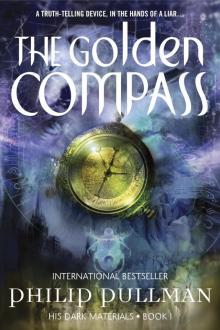 The Golden Compass
The Golden Compass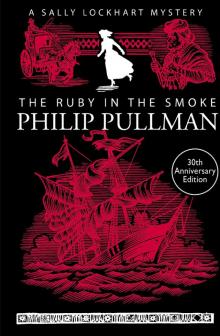 The Ruby in the Smoke
The Ruby in the Smoke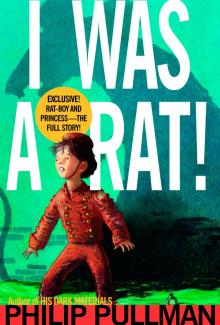 I Was a Rat!
I Was a Rat!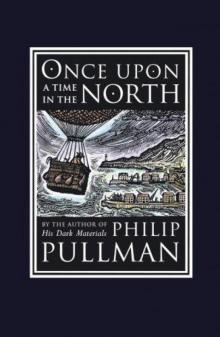 Once Upon a Time in the North
Once Upon a Time in the North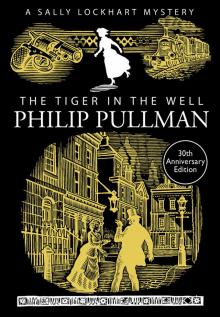 The Tiger in the Well
The Tiger in the Well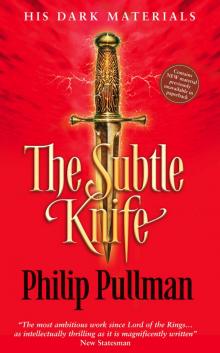 The Subtle Knife
The Subtle Knife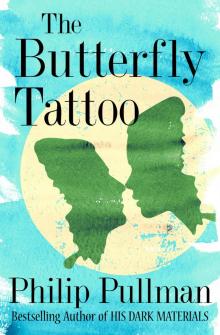 The Butterfly Tattoo
The Butterfly Tattoo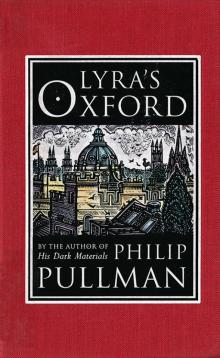 Lyra's Oxford
Lyra's Oxford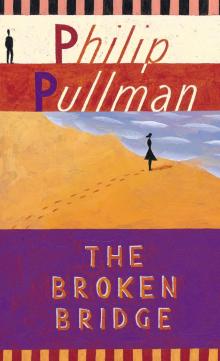 The Broken Bridge
The Broken Bridge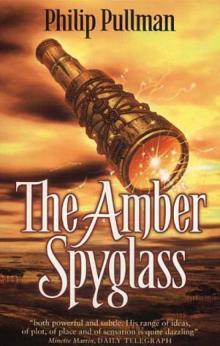 The Amber Spyglass
The Amber Spyglass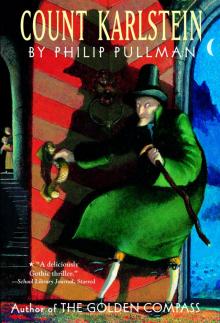 Count Karlstein
Count Karlstein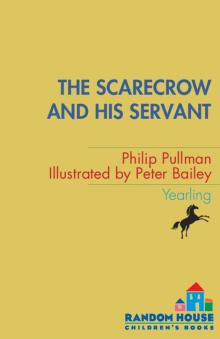 The Scarecrow and His Servant
The Scarecrow and His Servant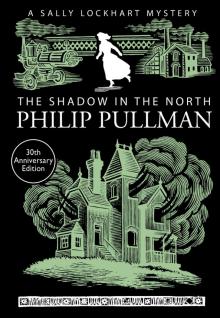 The Shadow in the North
The Shadow in the North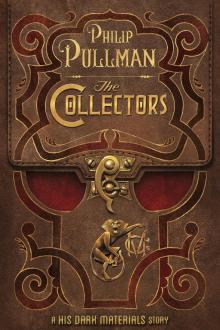 The Collectors
The Collectors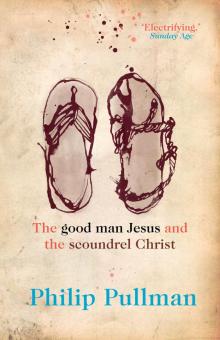 The Good Man Jesus and the Scoundrel Christ
The Good Man Jesus and the Scoundrel Christ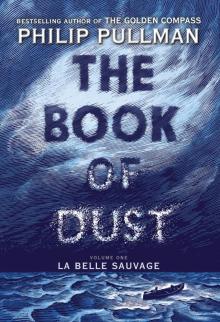 La Belle Sauvage
La Belle Sauvage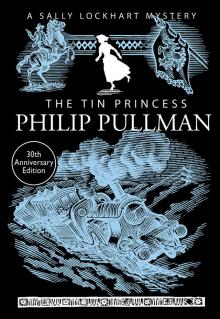 The Tin Princess
The Tin Princess The Firework-Maker's Daughter
The Firework-Maker's Daughter The Book of Dust: The Secret Commonwealth (Book of Dust, Volume 2)
The Book of Dust: The Secret Commonwealth (Book of Dust, Volume 2)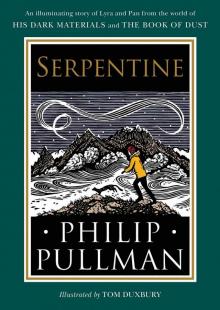 Serpentine
Serpentine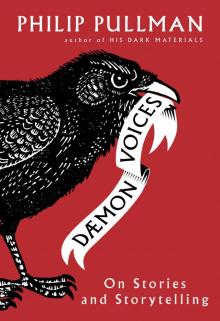 Daemon Voices
Daemon Voices The Amber Spyglass: His Dark Materials
The Amber Spyglass: His Dark Materials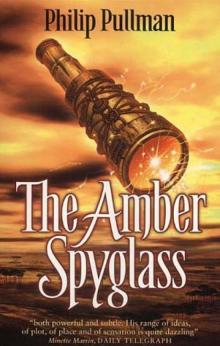 The Amber Spyglass hdm-3
The Amber Spyglass hdm-3 The Haunted Storm
The Haunted Storm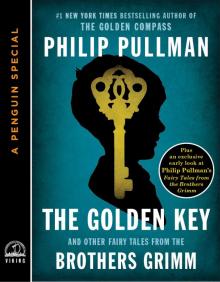 The Golden Key
The Golden Key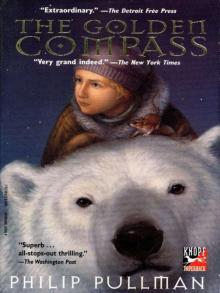 His Dark Materials 01 - The Golden Compass
His Dark Materials 01 - The Golden Compass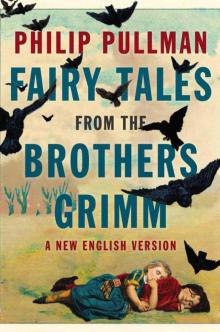 Fairy Tales from the Brothers Grimm: A New English Version
Fairy Tales from the Brothers Grimm: A New English Version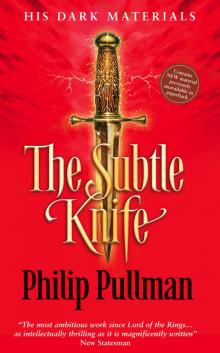 His Dark Materials 02 - The Subtle Knife
His Dark Materials 02 - The Subtle Knife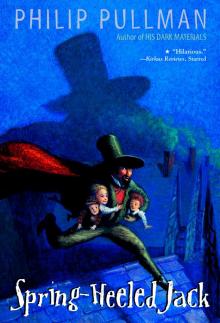 Spring-Heeled Jack
Spring-Heeled Jack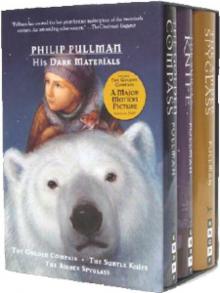 The Golden Compass hdm-1
The Golden Compass hdm-1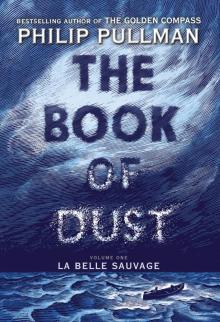 The Book of Dust, Volume 1
The Book of Dust, Volume 1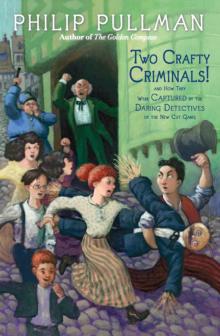 Two Crafty Criminals!
Two Crafty Criminals!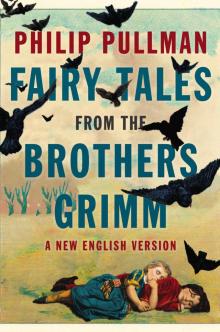 Fairy Tales from the Brothers Grimm
Fairy Tales from the Brothers Grimm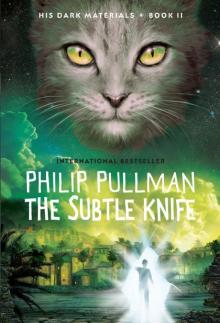 The Subtle Knife: His Dark Materials
The Subtle Knife: His Dark Materials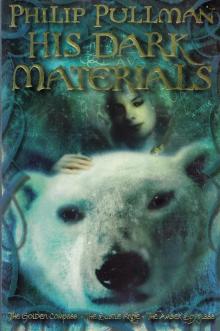 His Dark Materials Omnibus
His Dark Materials Omnibus The Golden Compass: His Dark Materials
The Golden Compass: His Dark Materials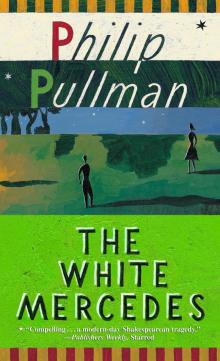 The White Mercedes
The White Mercedes